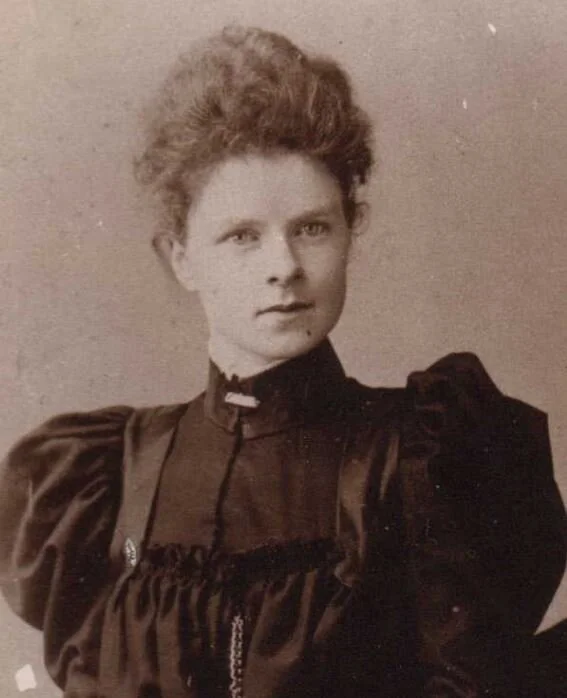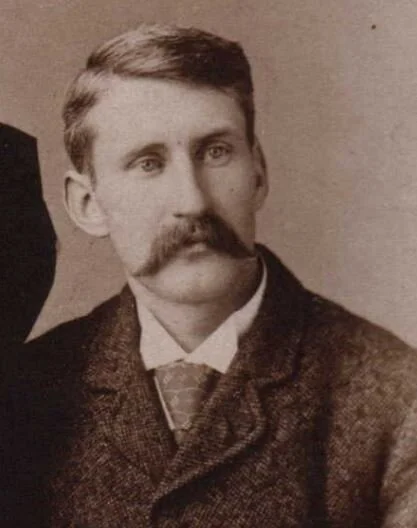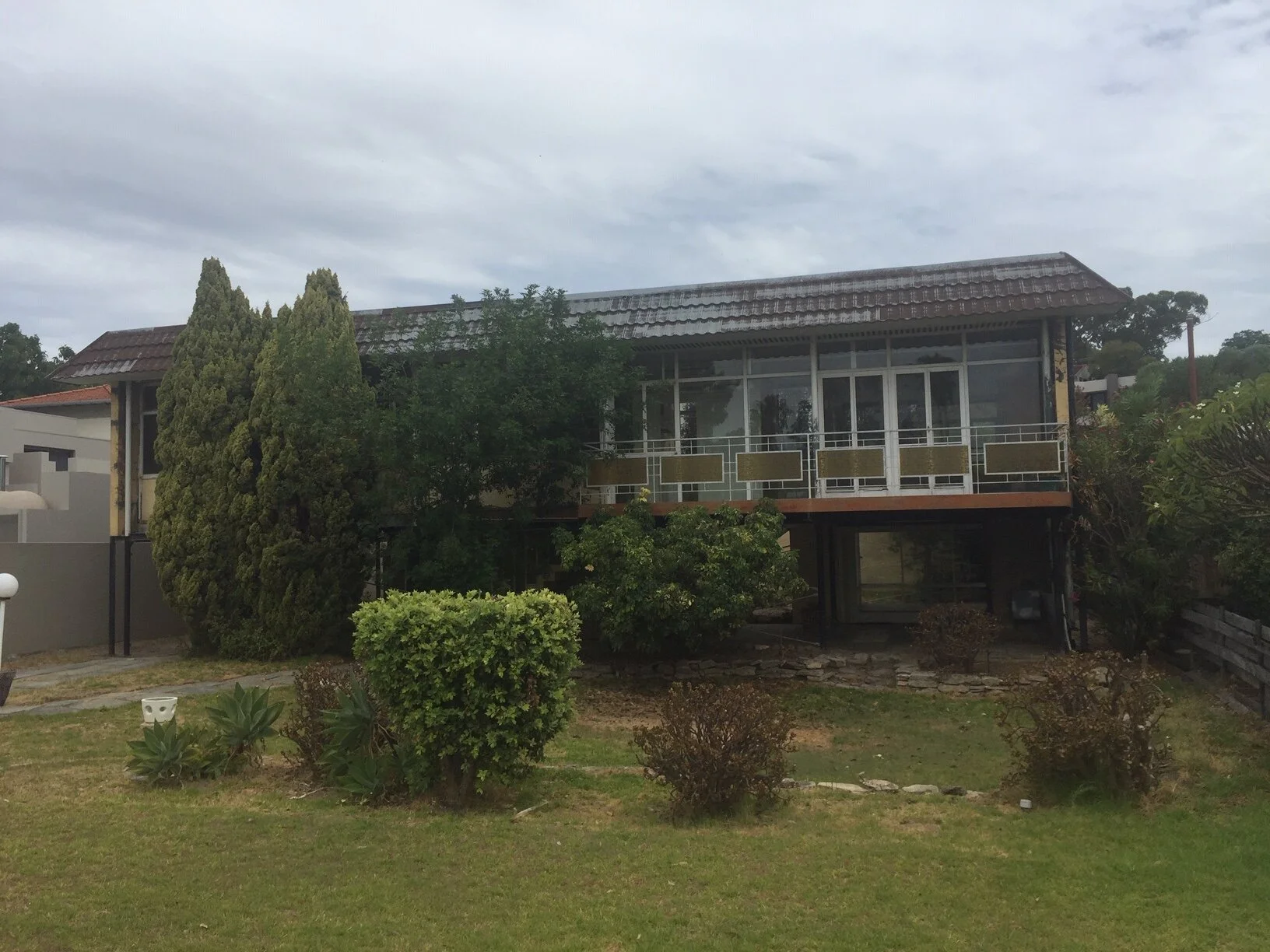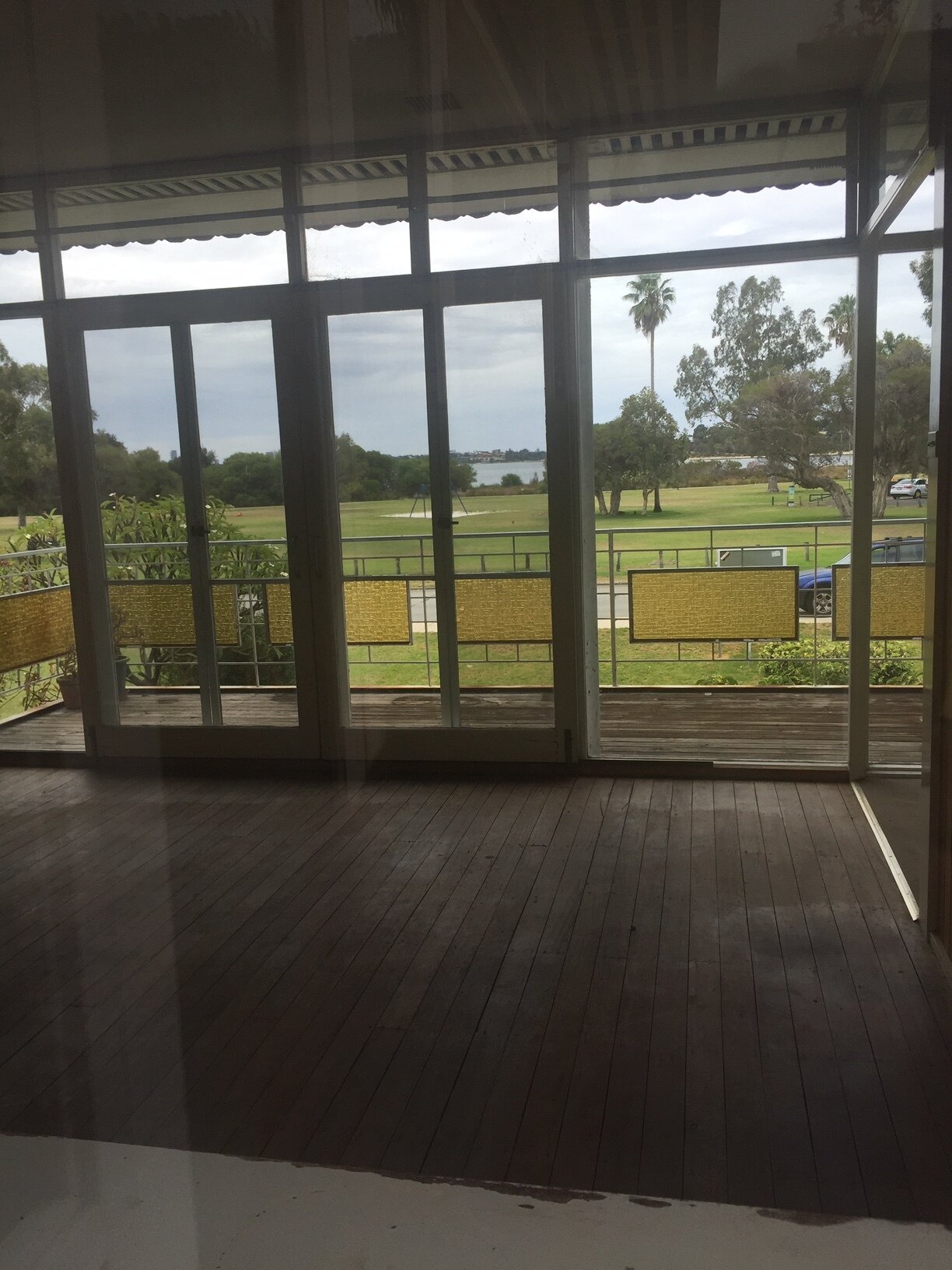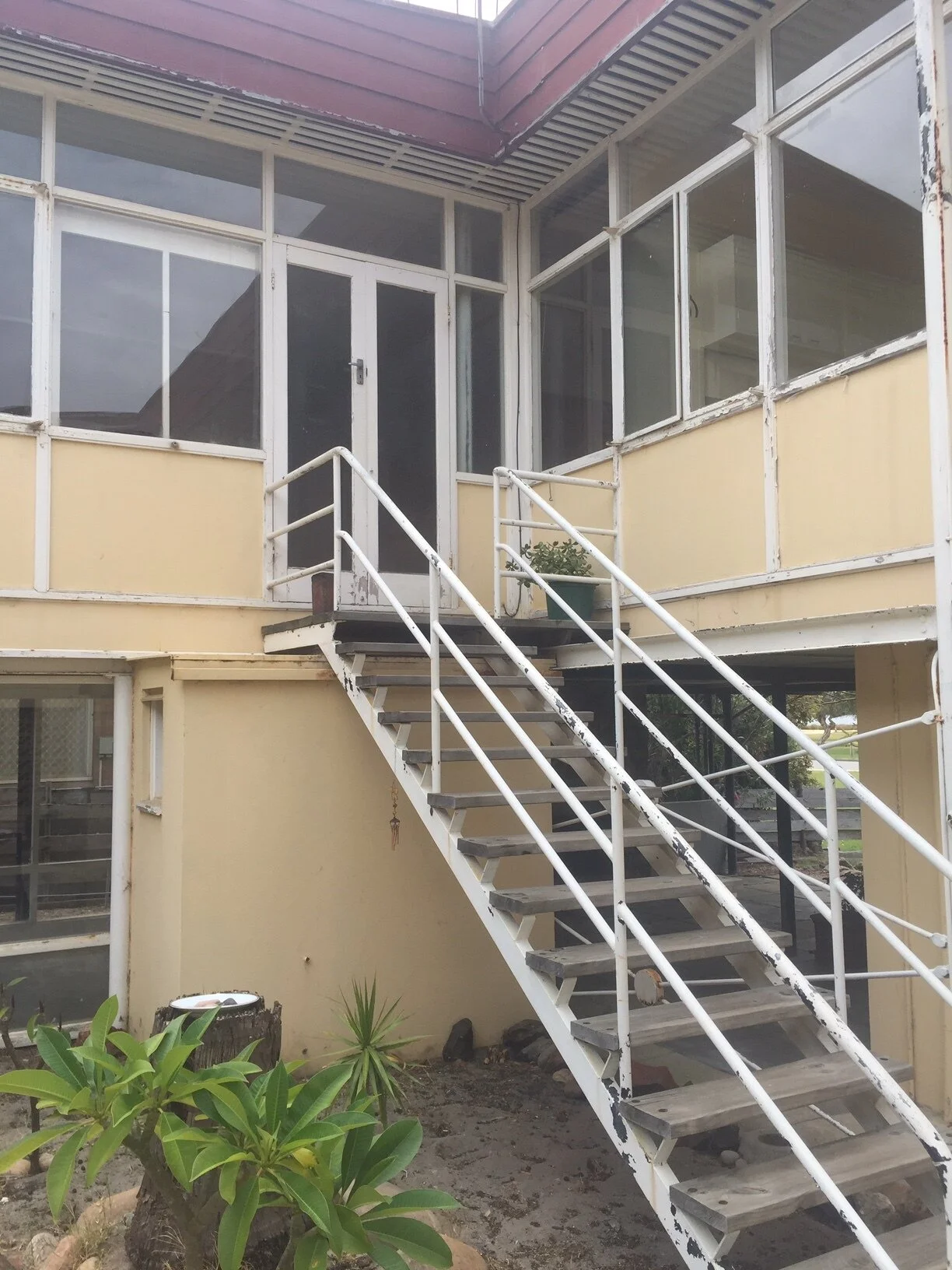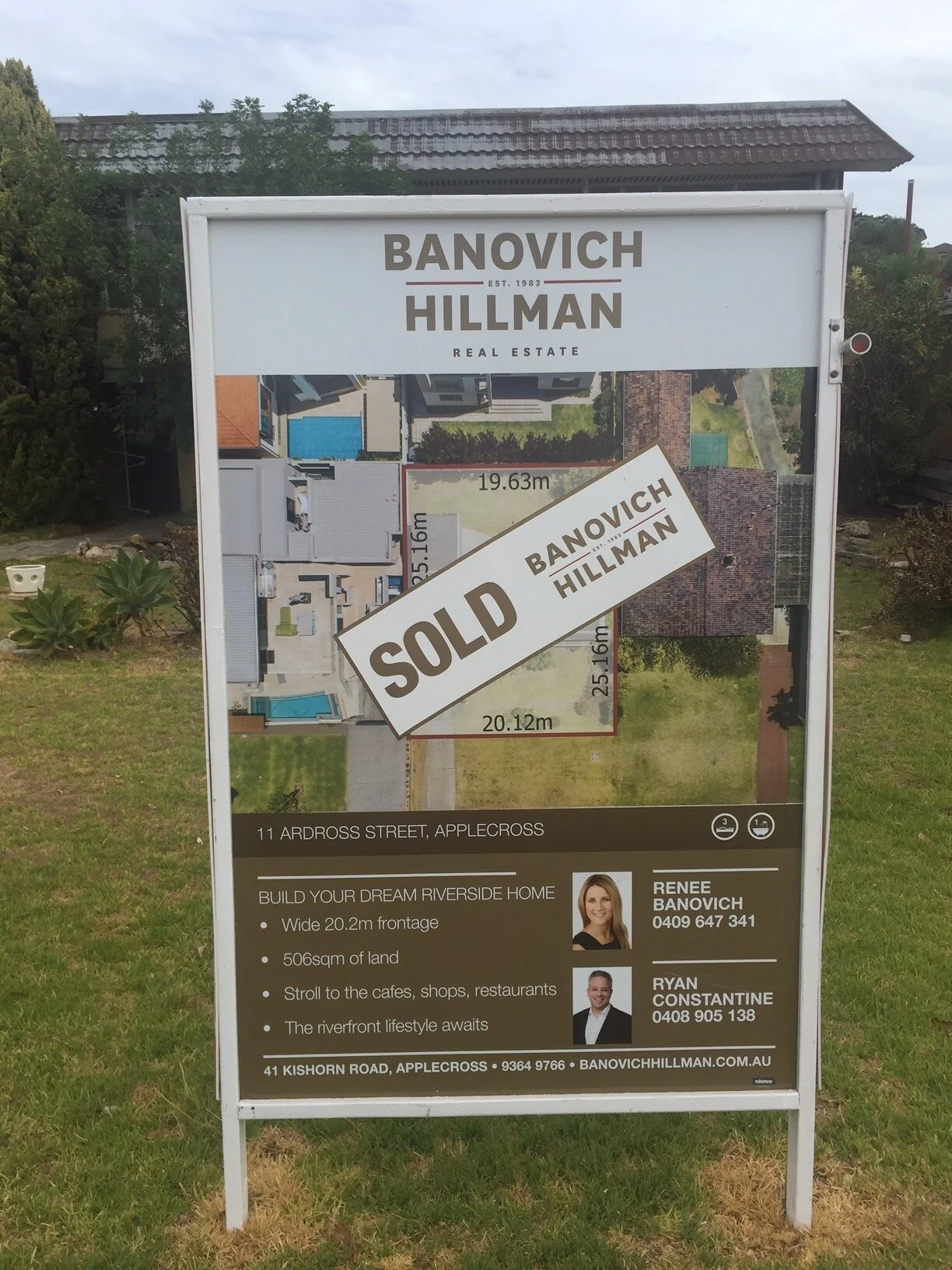Lila Kidston-Hunter
(1900-1995)
Lila Kidston-Hunter was a well known infant health nurse in East Fremantle. Her sister Bessie, was also a midwife. With her partner and companion Phyllis McKim she also ran St Helen’s Private Hospital at 33 Moss St, East Fremantle from 1943-1954.
Eliza ‘Lila’ Russell Kidston-Hunter was born in Dunedin, Otago, New Zealand in 1900. Her father Glasgow born Archibald Glen Kidston-Hunter (1886 -1937) was an analytical chemist in Dunedin before relocating, first to Wodonga in New South Wales in 1905 (reference) and then to Western Australia. In 1895 Archibald had married Elizabeth (Eliza) Ronald Inglis Russell (1875-1967) and they had 4 children: Elizabeth (Bess) Ronald Inglis (born Motueka NZ 1885-), Margaret (Rita) Gourlay (born England 1895-1981), Eliza (Lila) Russell (born Dunedin NZ 1900-1995), and a son John (Jack) William who was born in Collingwood, Victoria (1904-1956).
Her father was very entrepreneurial- Around 1906 AG Kidston-Hunter proposed a meat works industry in Wyndham to the WA Government. He tried unsuccessfully to can meat and gave evidence at the Royal Commission of 1908 into the meat preserving industry:
‘’...Hunter said that he had been termed a theorist, but that, if needful, he could furnish the Commission with figures proving contestably that a profitable meat preserving industry could be built up in the State; Mr. Hunter, who is a public analyst under the Health Act, and Official Government Analyst (Vic), under the Artificial Manures Act 1904, is also classed as an expert Assayer, chemist and bacteriologist. (reference)
In 1910 he was listed as sending 13 bales of wool and 25 hides to London on the Clan-Sinclair (reference) and from 1911 until 1914, while living at Coogee, Kidston-Hunter was a foundation member and honorary secretary and treasurer of the Jandakot Dairying Association… (reference) (reference) (reference)
In 1919 the Kidston-Hunter family moved to live at ‘Cairnhill’, 91 Preston Point Rd, East Fremantle where they stayed until 1967. This is now in the Ghost History section as it has been demolished.
The property had previously been part of the vineyard of Charles and Jane Gallop. (In 1885 Jane Woods (1865-1937) married Charles Gallop (1905-1919). Jane was registered as living at 91 Preston Point Road after Charles’s death in 1919, and until 1934, however she was living at 21 May st, East Fremantle when she died in 1939.
1900 Fremantle- Robbing a Garden. John Moore, 16, was charged with the theft of some grapes from the garden of Chas. Gallop, at Preston Point. The informant stated that he detected the accused with three other boys robbing his vineyard. He pursued the pilferers, and captured young Moore without losing sight of him...reference)
In 1920 Archibald Kidston-Hunter, noted as a retired chemist, sued Mr J. H. Johnson for £600 for commission and 2500 shares in connection with an alleged breach of agreement concerning the Lake Clifton Cement Company. The matter was found in favor of Kidson-Hunter, granting him £500 in cash and 1000 shares in the company. (reference) In July 1921 he applied for an area of 20,000 acres to establish an industrial development (Dept of North-West where he wanted to mine Guano on the Lacepede Islands off the coast of Broome (State Records office). In 1922 Archibald applied for a patent for a type of cement (reference) and in 1923 as his patent application was successful for a product called 'Oxal' (reference) (reference) he began marketing the cement:
‘’Ambitious Claims. There was a large gathering at the Crystal works. Subiaco, on Friday, when Mr. A. G. Kidston-Hunter, general manager of the ‘Oxal’ Co., explained and demonstrated the merits of the Oxal water-proofing compound for cement, concrete and stone. Among those who listened to Mt. Hunter's remarks, and were keenly attentive to his demonstration, were the Minister for Industries (Mr. J. Scaddan), the Mayor of Perth (Mr. J. T. Franklin) and representatives of no fewer than 10 municipal governing bodies..."The Oxal Company," continued Mr Hunter, "have set themselves out to produce a cement which will be impervious to water and oil’’. A slab made by his own process would last for five years, despite exposure to hard and constant traffic… Mr. Scaddan remarked that if Mr Hunter achieved what he had set out to do he would be rendering not only a great service to Western Australia but also to engineering generally... (reference)
In Sept 1924 Archibald’s partnership with Richard Thomas Stubbs in the Oxal Company Cement Manufacturers at Subiaco was dissolved by mutual consent. (reference). Things went badly, and in June 1925 the Bailiff, in lieu of rent, advertised that the complete plant and materials for the manufacture of oxal would be auctioned. (reference) In 1928 Tenders were called for the sale of Oxal Co of 154 Lord-st., East Perth…for the assets, stock and Patent Rights, valued at £50 (reference) and in Dec 1928 the factory on the corner of Parry and Lord Sts, Perth was up for sale. (reference) In April 1929 A.G Kidston-Hunter filed for bankruptcy. (reference)
In 1919, Lila’s elder sister Elizabeth, ‘Bessie’ began training as a nurse at the Children’s Hospital in Perth. In 1922 she received her certificate (by examination-registration no 907).
In 1920 at twenty years of age Lila Kidston-Hunter followed her sister and also trained as a nurse at the Children’s Hospital in Perth. She received her nursing certificate (by examination- registration no 681) in 1923. (reference)
Bessie may have first conceived the idea of owning her own private hospital after attending the reception given by the inspiring Sister Lovell in June 1922:
An interesting little function took: place yesterday afternoon to celebrate the opening day of Hamel House, Sister Lovell’s lately acquired private hospital for children….Yesterday all the rooms were gay with bowls of roses in Sister Lovell's sitting room, where she dispensed tea to the guests...Dr. Officer referred 'to the sterling qualities and high esteem in which Sister Lovell is held in the nursing profession, and congratulated her upon her beautifully equipped hospital… Sister Lovell saw active service both in Egypt and in France, and for many years has been associated with the Children's Hospital. (reference)
In 1926, at Invercargill, New Zealand, Elizabeth (Bess) married Frank Mangan. (1885-) (reference) They returned to live with her parents in 1927 and daughter Mary L was born in 1928. This was an ill-fated marriage as Frank was a ‘rotter’. In March 1928 Frank Mathew Mangan (27), alias Ted Davis, woolclasser, was arrested in Adelaide where £111 was found in his possession. (reference) He returned to Western Australia in custody, charged with having stolen £200, from Alfred Rowland Cooper in Fremantle on February 10…(reference)
“They became very friendly, and on February 6 witness invited Mangan, whom he knew as Ted Davis, to his home. On February 9 and 10 Mangan slept at witness's home…the accused left the house intimating that he was going to visit his wife at a maternity hospital to get some money. Shortly afterwards witness had a presentiment that something was wrong, and on unlocking the drawer discovered that the two tobacco tins which contained about £160 were missing”…. (reference)
Although it is not known how this case was resolved - Mangan was sentenced to three months hard labour on another bizarre charge of fraud in Bunbury in July 1928, attempting to appear ‘well to do’ to defraud ‘monumental sculptor’ Robin Hancock... (reference)
On the 31 Dec 1931 Bessie successfully obtained a divorce:
‘Apparently marriage, like drink, affects different persons in different ways,' observed the Chief Justice, Mr Justice Northmore, in the Divorce Court today, when granting Elizabeth Ronald Inglis Mangan, an attractive young woman, a divorce from Frank Mathew Mangan, who was a wool-classer and skin-buyer in New Zealand when she married him in December 1926. Mrs. Mangan said, her husband was apparently a good worker, and did not drink or gamble before marriage, but afterwards became unmanageable. She had money of her own and gave him £1000 with which to enlarge his business of skin buying but he gambled and drank the money away. They came to Western Australia in 1927 and lived with her parents, who were well off, at East Fremantle. Finally, when the money ran out Mangan deserted her and had since been jailed for stealing. Mrs. Mangan was given the custody of one child of the marriage and costs. (reference)
In 1931, perhaps because of the divorce, Bessie was working as a nurse in Kukerin in the wheatbelt. She returned in 1932 to work as a midwife at Salopia- previously also known as Nurses Arundall & Watson’s private Maternity Hospital (operated from 1928-1932), at 144 Queen Victoria St, Fremantle. (reference) By June 1932 Mangan was named as the licensee of the premises and Salopia became Sister Kidston-Hunter’s Hospital- and Bessie ran the business until 1936.
1932 Birth on June 28, at Sister Kidson-Hunter's Hospital, Queen Victoria-street, to Mr. and Mrs. Keith H. Whately a son. Both well. (reference)
June 1936 The Salopia Maternity Hospital, of 144 Queen Victoria street, formerly conducted by Sister Kidson Hunter, is now under the management of Nurse Scott (Ayton). (reference)
Bess and Mary later changed their surname to Inglis and went to live in NSW.
In 1927 their sister Margaret “Rita” (who become a teacher) married Archie ‘Bert’ G. Burtenshaw, a store hand in Fremantle. Archie was the second son of Mrs. M. Burtenshaw, of Sidcup, Kent. They had two sons- John and Len and a daughter- Lila R Burtenshaw, who was born in Fremantle in 1930 (named after her aunt). In 1951 Lila Burtenshaw married George Curtis.
In 1929 Lila’s brother John Kidston-Hunter, aged 25, married Pearl Rebecca Langley (1907- 1982) In 1946 a daughter Elizabeth Anne was born at St Helens. (reference)
1929 was a great year for Lila- she was living at home in Preston Point road when she took possession of a new car- a 14.22 Morris Cowley tourer (reference) and she was appointed Sister-in-charge at the East Fremantle Child Health Centre:
1929 Cr. E. H. Gray, M.L.C., announced at last night's meeting of the East Fremantle Council that the Infant Health Centre, which had been formed to cater for the East Fremantle, and North Fremantle municipalities, and the Melville Road Board area, would be officially opened by the Minister for Health (Mr. Munsie) on July 7…The East Fremantle Council had also granted the use of a room with all conveniences for the use of the clinic. The centre had been fortunate in obtaining the services of Sister Kidson-Hunter, who would be in charge of its activities. The council expressed its satisfaction at the report submitted. (reference)
Originally and for many years the Infant Health centre was situated in one of the rooms at the East Fremantle Town Hall building. The honorary medical officer of the centre was Dr. Dorothea Parker (see notable people) and Nurse L. Kidston-Hunter was sister-in-charge. One of the main ideas was to encourage mothers to feed their babies naturally as it was a well-known medical fact that a breast fed child had a greater chance of combating disease than an artificially fed child. (reference)
Since the turn of the 20th century, there had been concern about the health and welfare of infants and their mothers in Western Australia. To overcome these concerns the Public Health Department established the Midwives Registration Board which aimed to use visiting nurses to help educate mothers about infant health. In 1922 the Children’s Protection Society instigated a conference which resulted in the establishment of the Infant Health Association of Western Australia the following year to work with the Public Health Department. In the same year three clinics with full time nurses began to operate in the Perth area and by 1925 Northam and Fremantle had clinics as well. More clinics were established in the following years. The infant health centres received a £100 subsidy from the Public Health Department but mainly relied on local government and community fund raising for financial support. During the Great Depression the government reduced the Infant Welfare Association subsidy by 20%...The infant health nurses' duties included weighing the babies, referring sick babies to a doctor or hospital and keeping the mother informed of their child’s development and progress. The infant health centres were also education facilities for mothers and taught them how to best care for their babies. The success of the program was evidenced in the decline in the infant mortality rate, which fell by 48% from 64% in 1942. (reference)
1929 The two branches of Infant Welfare Activity- the Birmingham and East Fremantle clinics saw 1,490 attendances at the two centres during the twelve months ended September 30, and over 323 babies received expert services- at the hands of two sisters, Sister Salmon, of Fremantle, and Sister Kidson-Hunter at East Fremantle. (reference)
1930 Report to Council- the infant health centre, in the charge or Sister Kidson-Hunter and the secretary (Mr. E H. Gray, MLC) was doing much good work and proving of great benefit to mothers and children in the district. (reference)
In April 1932 Lila was pictured holding babies at the baby centre in East Fremantle- SMILES AND TEARS AT EAST FREMANTLE BABY CENTRE (reference) and in July 1932 she was thanked for her ‘’efficient and unfailing service during the year’’ by President H J Locke. (reference)
The strong relationship between Dr. Dorothy Parker and Lila Kidston-Hunter continued after she left the Infant Health Centre. Many of these nurses and female doctors were professional women who did not marry because to do so would put an end to their work and careers. They supported each other and often lived and holiday’d together.
1935 A pleasant afternoon tea party was given by Dr. Stang on Saturday at her home at Swanbourne, the occasion being to give the sisters associated with infant health work in the metropolitan area an opportunity to tender their good wishes to one of their colleagues, Sister Walton, who is leaving the work to be married. Among those present were: Sister Walton and her sister Mrs. Schooler; Sisters Cole, Darling, Salmon, Nicholson, Jones, Hayes, Carmichael, Courthope, Thompson, Carroll, Kidson Hunter, Yates, Mead, Saunders, Parker. (reference)
In February 1937 her father Archibald died aged 73 at Cairnhill, Preston Point-road. He was buried in the Presbyterian Cemetery, Fremantle
Archibald Glen KIDSTON-HUNTER, dearly beloved husband of Eliza Kidston-Hunter, and loving father of Bess (Mrs. E. H. Inglis, Mosman, NS.W.), Rita (Mrs. A. G. Burtenshaw), Lila and Jack;: father-in-law of Bert Burtenshaw; grandfather of Mary Inglis, John, Len and Lila Burtenshaw (reference)
1937 Miss Kidson-Hunter, of East Fremantle, returned on Tuesday from a holiday in Sydney and the Blue Mountains. (reference)
1938 Mrs Kidson-Hunter, of Preston Point road, East Fremantle, entertained at her house on Friday last, when bridge and monopoly provided entertainment. Assisted by her daughters, Mrs Buttenshaw and Miss Kidson-Hunter the hostess received guests in a frock of black georgette and lace. (reference)
In 1939 Lila worked as Sister in charge at the North Fremantle Infant Welfare Kindergarten and Girl Guides' Centre (reference)
In 1943 Lila went into partnership with midwife Sister Phyllis McKim at St Helen’s Hospital, 33 Moss Street. Until the late 1950s they worked together to bring many hundreds of babies into the world. Other midwives known to have worked at St Helens (from 1926-1959) included: Virginia Stradwick, (1928); ER Catherall; A. Aileen Erskine; and EA Richardson (all 1932). Local information suggests that St Helen’s (as Moss Street Lodge) may have been a government receiving depot for babies awaiting adoption. However this has not been confirmed. (reference)
Although born in South Fremantle Phyllis Iona McKim (1905-1973) went east to study and graduated as a nurse from the Royal Alexandra Hospital for Children in NSW in June 1930. (reference) Her family lived on a citrus farm in Gosnells, WA. Her father George Arthur McKim had first been a steam driver then a jam manufacturer in South Fremantle (1929). Finally he became a citrus grower- and a confectioner making candied orange and lemon peel in Gosnells. Her mother Clarice ‘Clara’, sister Dorothy Winifred (clerk) and brother Kelvin George Arthur (motor driver) also lived there. Phyllis started working at St Helens in East Fremantle in 1930 (reference) and taking twelve months in 1938, she left for England to further her studies in nursing.(reference)
The relationship between Lila and Phyllis may not have been just a working partnership. Being out in a same-sex or lesbian relationship was not publicly acceptable at this time. Many women had female partners that were referred to as ‘companions’. Heterosexuality was the default assumption until explicitly stated otherwise. But it seems that as they got older- Phyllis and Lila were free to live a more intimate life together:
In 1947 Phyllis and Lila bought a new Vauxhall sedan car together. (reference) The two lived and worked at 33 Moss St until 1954 when they built a new, modern steel-framed home together at 11 Ardross St, Applecross:
1954 Four homes to be built on this principle are now on the drawing boards of Messrs. F.G.B. Hawkins and D. Sands. Tenders will soon be called for the first of these which is to be built at Ardross-street, Applecross, for Misses E. Kidston Hunter and P. McKim. To overcome a 4ft. drop from Ardross-street and so gain views of the river beyond, it was decided to raise the house 7ft. This was achieved by supporting the whole structure on 17ft. 6in. long steel columns which left space under the house for a carport, laundry and utility room and living-out space fitted with a barbecue… Having a ‘Rolls-Royce' finish, the home is fitted with sliding doors, built-in furniture and a mechanical forced ventilation system to remove cooking smells from the kitchen. (reference)
1950 Mrs Harold Tilley of Peppermint Grove, gave a buffet tea recently in honour of the birthday of Sister P McKim, of East Fremantle. The guests included Dr. Dorothea Parker, Mrs. Uther Baker, Sisters Kedston-Hunter (sic), Kenny and Baldwin, Mrs. Q. Cranston and Mrs. F. Aberle. (reference)
In 1952 Lila (50) and Phyllis (46) took a holiday to London together, returning on the Strathnaver. In 1956 Lila and Phyllis travelled to London again and stayed at the Cromwell Hospital, returning from their travels on the Stratheden.
In 1956 Lila’s brother John William Kidson-Hunter (a manager) died in Fremantle. He and Pearl were living at 40 Riverside Road. Pearl Kiddston-Hunter was active with the East Fremantle Leisuretime Group, established in 1979 and died in 1982.
Lila’s mother Eliza died 1967 at 91 Preston Pt Road. The old house was demolished and the one there now was built in 1984. It last sold in 2002.
Phyllis Iona McKim lived at 11 Ardross st, Applecross with Lila, from 1956 until her death in 1973. She was cremated at Fremantle Cemetery.
Eliza ‘Lila’ Russell Kidston-Hunter died in 1995 in Applecross at the age of 94. She was cremated at Fremantle Cemetery.
Researched and written by Jo Darbyshire 2021.
L Kidston Hunter 1932 The Daily News, Sat 16 Apr 1932 Page 15 SMILES AND TEARS AT EAST FREMANTLE BABY CENTRE


